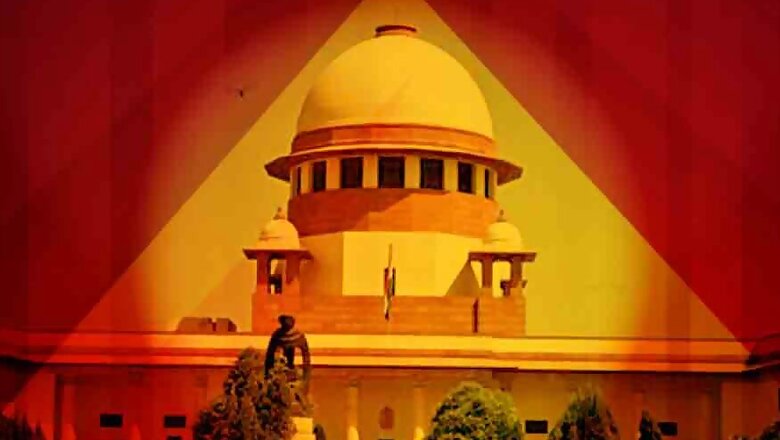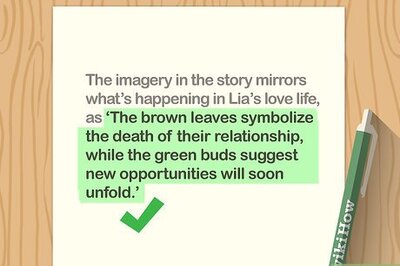
views
On November 9, the Supreme Court created history with a landmark verdict. This verdict will be heralded as a watershed moment in the history of our nation. The Ayodhya dispute was one which had divided our nation, communities and had threatened to tear into the fabric of cultural assimilation, which was one of India’s most proud achievements.
There was immense pressure on the judiciary to resolve this dispute of 2.77 acres of land. There is no better way, the judiciary put forth their inhibitions, as the Allahabad High Court did in the year 2010. The esteemed judges of the Allahabad High Court had stated, “Here is a small piece of land, where angels fear to tread. It is full of innumerable land mines.” This challenge was accepted by the Supreme Court and these land mines were cleared by a unanimous verdict of five esteemed judges of the Supreme Court.
At the heart of it, there is a misconception that this was a dispute between two communities or faiths -- whether there was a temple or mosque at the disputed site. However, the dispute was solely a civil one, a title suit for the claim of property. Simply put, there was a question before the court as to who was the owner of the 2.77 acres of disputed land. The Supreme Court, through a 1,045-page judgment, awarded this disputed land for the construction of Ram Mandir and upheld the juristic rights of Bhagwan Sri Ram Virajman. The ratio deciding this verdict or reasons behind it were purely on the established principles of evidence, and only came through after both sides were given a fair hearing. This verdict was a victory of the due process of law and is a true manifestation of our faith in the judiciary and the law of the land.
Over the past few days, a lot has been said about the verdict and the role of the judiciary, but equally significant was the role of the leadership of Prime Minister Narendra Modi. In January this year, several agitations and populist demands were made seeking an ordinance by the government to resolve the Ayodhya dispute. The Prime Minister on severally occasions categorically stated that the issue of Ram Janmasthan should be decided within the framework of the constitution. This was yet again indicative of the political maturity at display and the courage to muster away from what could have been a politically lucrative decision.
In the past few years a tendency, rather unfortunate one, has been kickstarted of judging the Supreme Court on the basis of the verdicts given, on whether it suits a particular narrative on side of the political spectrum. Often, it takes place that no judges are spared from the supreme whispers in the corridors of the courts. It was shambolic that there were certain articles in the online press which went to the extent of criticising a judge, known for his progressive thinking, that he should have delivered a dissenting verdict and by being part of the unanimous ruling, the article stated that he had let himself down. This was yet again an attack on the independence of the judiciary and a futile attempt to browbeat it as well.
In all these conclusions and observations, it is important to be informed as to what this verdict entails and what the key takeaways are so that they do not get lost in the mighty sea of rhetoric, caricatures, memes and jokes. Here’s what the Supreme Court ruled:
• The report of the Archaeological Survey of India (ASI) cannot be brushed aside as conjecture and this report showed that Babri Masjid was not built on a vacant land and the underlying structure was not of Islamic origin.
• The faith of the Hindus that the place is the birthplace of Lord Ram is undisputed.
• The Ram Janmabhoomi has no juristic personality but Ram Lalla, the deity has juristic personality.
• The suit by Sunni Waqf Board was maintainable and was not barred by limitation.
• The Sunni Waqf Board was unable to prove adverse possession and, on the contrary, there is clear evidence to show that Hindus had been visiting the premises prior to 1857.
• There is clear evidence to show that Hindus worshiped in the outer courtyard of the disputed site. As regards to the inner court yard, there is no evidence in the suit by the Sunni Board to show their exclusive possession prior to 1857.
• The Allahabad High Court in 2010 was wrong in splitting the property into three, giving each party one-third share. Moreover, the Supreme Court observed that this was not a partition suit.
• The entire 2.77 acres of disputed land in Ayodhya was granted to the deity Ram Lalla.
• The apex court has directed the Centre and the Uttar Pradesh government to allot five acres of land to the Muslims for building a mosque. The court further instructed the government that the allotted land should be at a prominent place in Ayodhya.
• Lastly, the Supreme Court directed the central government to set up a trust within three months to formulate a scheme for the construction of a Ram Temple at the site where the Babri Masjid was demolished. It further observed that the central government could grant representation to the Nirmohi Akhara in the said trust.
These takeaways pose a pertinent question of why this issue remained unresolved for seven decades, causing disruption to human life and property. With this balanced and courageous verdict, the Supreme Court has risen to the occasion to yet again and reaffirmed the faith of 1.3 billion in the judiciary. It’s a no brainer that if there had to be a man of the match award for the November 9 judgment, it would have collectively been given to the five-judge bench led by the Chief Justice of India.
(The author is a senor advocate based in Mumbai and is managing partner of Parinam Law Associates.)




















Comments
0 comment